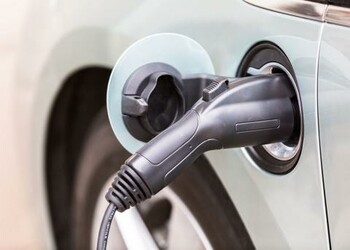Self-Driving Cars, Electric Vehicles and the Future of the Neighborhood Service Station
CAMBRIDGE, MA—By 2020, ten million self-driving vehicles will be roaming the roads in the U.S. Fueling the growth are Google, Tesla, Ford and others who see a Jetson-esque future in travel. But experts say little attention is being paid in servicing those vehicles. Some ask: is the neighborhood gas station ready for a makeover?
Engineers studying the problem say the answer is to re-imagine the layout and function of service stations. They say the technology already exists to do so, such as robotic arms, wireless payment systems, mapping software and backend processes to ensure smooth entry and exit for vehicles.
But integrating all of the technology into a system that can service autonomous vehicles (AVs) has emerged as critically important. Engineers from Draper and the University of North Carolina at Charlotte have identified six distinct layers for autonomous driving stations: physical infrastructure, communication, classification, queueing, financial and services. A seventh, security layer, which is an integral part of the autonomous services, spans across all of the layers.
Details of the proposed system are laid out in a new paper presented at the International Conference on Intelligent Transportation Systems. According to the authors, no autonomous charging station systems currently exist, so they set out to develop the architectural blueprints for designing one.
The paper describes a new kind of service station, one in which a car or truck entering the station is guided along a path from entry through recharging to exit by a complex set of technologies. The station detects an entering vehicle using vision systems and depth mapping. The station and vehicle exchange information wirelessly to match the vehicle with the right pump. Once the vehicle is at the pump, a robotic arm recharges it and, after a wireless payment, the vehicle exits the station.
Critical to the design is the queuing capabilities. Under the new scheme, emergency AVs will be directed to the highest priority queue with the least service waiting time.
The new station design and scheduling processes are poised to remake the service station industry where the service is requested by a machine and rendered by a machine without any human involvement. GTM Research predicts that more than one million public charging points will be deployed globally by 2020, while residential charging points will surpass five million in 2020.
The timing appears to be right for the new type of charge stations, the authors say, because much of the technology for unsupervised autonomous vehicles is well along the path to development and deployment. Technologies mentioned in the paper include intelligent sensors such as 3D imaging, radars, LIDAR, ultrasonic sonars, laser scanner and GPS, all to help with an AV’s situational awareness. A set of advanced technology to help charge-stations operate in this new environment includes artificial intelligence, big-data analytics, internet of things paradigms, robust networking platforms and customized data centers, the authors said.
Authors are Khurram Kazi and Adam Kelsey of Draper and Churlzu Lim, Ravil Bikmetov and M. Yasin Akhtar Raja of the University of North Carolina at Charlotte.
The new research adds to Draper’s growing portfolio of autonomous system and self-driving car capabilities. The portfolio includes the Draper APEX Gyroscope—a MEMS gyroscope that provides centimeter-level localization accuracy. It also includes LiDAR-on-a-Chip—a chip-scale MEMS-based LiDAR that is an affordable and scalable solution with the performance to enable a driverless car to travel safely at highway speeds.
Released January 29, 2019

